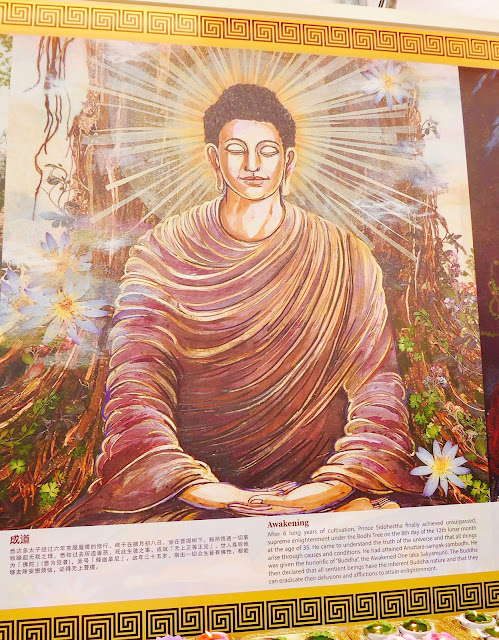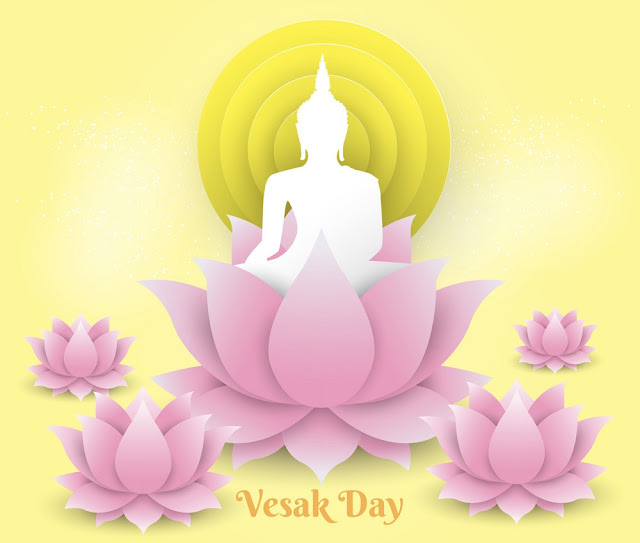Today is Vesak Day, the day of Buddha's birth, enlightenment and parinirvana. I spent the day writing my reflection on this day, grateful for the Buddha's teaching. The enlightened and compassionate Buddha had tirelessly taught the Dhamma for forty-five years to human in human realm( regardless of social castes and genders) and devas, brahmas from the heavenly realm. I am immensely joyous that I finally understand Buddha's teaching on the Four Noble Truths and the cessation to suffering is the Noble Eight-fold path. I have been observing the five precepts but am now considering the 8 precepts.
Yesterday I went to Fo Guang Shan event, located next to Punggol MRT station to explore vegetarian food fair. At the same time, I made some donation. This week, I also went to Palelai Temple to make dana as I enjoy Ajahn Keng's dharma talk.
I found happiness in Buddha's teaching as he taught us the path to end cyclic rebirth in this samsara world with the Noble Eight-fold path and to eliminate the three poisons- greed, hatred and delusion.
Parinirvāna of Buddha
Buddha 'When I am gone, my Teaching shall be your Master and Guide.' Three months before His passing away the Buddha addressed His disciples and said: 'I have delivered sermons to you during these forty-five years. You must learn them well and treasure them. You must practise them and teach them to others. This will be of great use for the welfare of the living and for the welfare of those who come after you'. At the age of eighty, on His birthday, He passed away without showing any worldly supernatural powers. He showed the real nature of component things even in His own life. The parting words of the Buddha: 'Work diligently. Component things are impermanent.
By Buddha
" Craving, with you I've been born again and again. But now you're reviewed and your power redundant. It is the nature of all conditioned to arise, persist for a while and then pass away. Investigate the impermanence of all conditioned phenomenon. For the tears of beings wandering through the samsara are beyond measure. One who is still attached to form, sound, taste, smell and physical sensation cannot find liberation from this world."
Buddha 'When I am gone, my Teaching shall be your Master and Guide.' Three months before His passing away the Buddha addressed His disciples and said: 'I have delivered sermons to you during these forty-five years. You must learn them well and treasure them. You must practise them and teach them to others. This will be of great use for the welfare of the living and for the welfare of those who come after you'. At the age of eighty, on His birthday, He passed away without showing any worldly supernatural powers. He showed the real nature of component things even in His own life. The parting words of the Buddha: 'Work diligently. Component things are impermanent.
By Buddha
" Craving, with you I've been born again and again. But now you're reviewed and your power redundant. It is the nature of all conditioned to arise, persist for a while and then pass away. Investigate the impermanence of all conditioned phenomenon. For the tears of beings wandering through the samsara are beyond measure. One who is still attached to form, sound, taste, smell and physical sensation cannot find liberation from this world."
Singapore's icon Merlion is also featured at Fo Guang Shan .























